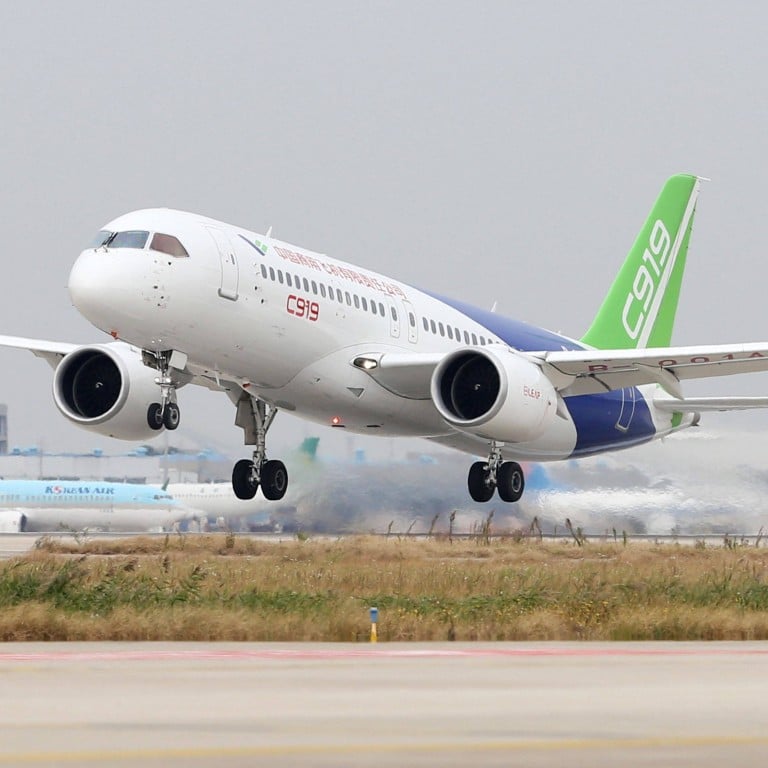
Boeing’s China orders ‘likely to be affected’ with home-grown C919 passenger jet set for certification
- Reports in China suggest the home-grown C919 narrow-body passenger jet could be certified as early as Monday, having been in development since 2008
- Single-aisle C919 has been built by the state-owned Commercial Aircraft Corporation of China to compete with Boeing’s 737 and Airbus’ A320
Boeing’s return to the critical Chinese market may face another stumbling block, analysts said, after local media reported that China’s home-grown C919 narrow-body passenger jet could be certified as early as Monday.
Yicai news service also reported on Tuesday that the C919 will be certified “as soon as this month” with China Eastern Airlines set to receive the first delivery “within the year”, without citing any sources.
Comac and the Civil Aviation Administration of China (CAAC) did not respond to faxed requests for comment on the media reports.
It is significant in its local market where it is likely to displace Airbus and Boeing sales, but this will be extremely difficult to replicate globally
Certification by the CAAC would pave the way for Comac to start delivering its C919, which has been in development since 2008.
“It is significant in its local market where it is likely to displace Airbus and Boeing sales, but this will be extremely difficult to replicate globally,” said John Strickland, director of aviation at consultancy firm JLS Consulting.
“It takes considerable time to build a reputation, and there is a need for consistent, reliable after-sales service and spares support in all markets where the aircraft may operate. This will be challenging to achieve.”
Shanghai-based China Eastern Airlines is expected to be the first carrier to operate the C919, having ordered four of the aircraft in May at a cost of US$99 million each.
“I suspect that there will be a lot of pressure on the Chinese carriers to support the C919, so yes, Boeing in China too does not see a short or straight road back,” said Andrew Charlton, managing director of consulting firm Aviation Advocacy.
Boeing’s business in China has been caught in the growing rift between Beijing and Washington since 2018.
In July, the Chicago-based aerospace giant also saw its rival Airbus secure a bulk order for 292 of its A320 single-aisle passenger jets from four Chinese airlines.
“Ultimately Boeing orders in China are likely to be affected by the C919, but I think political relationships will play a more important role,” added Strickland.
The battle of tech supremacy between China and the United States has also spilled over to aviation, with American backers prohibited from investing in Comac after Washington designated the state-owned firm as being “owned or controlled” by the People’s Liberation Army.
What’s China doing to save its aviation sector from a ‘cliff-like’ plunge?
China’s aviation market has also suffered under Beijing’s strict zero-Covid policy, with total losses in the first half of 2022 exceeding all of 2020 and 2021 combined, CAAC chief Song Zhiyong said in July, according to local media.
Debt owed by Chinese carriers grew by an average 11.9 per cent to 82.2 per cent this year compared with the average debt level before the coronavirus pandemic.
China’s travel industry is also under pressure, with the number of domestic tourism trips taken during the recent three-day Mid-Autumn Festival holiday down by 16.7 per cent compared to a year earlier and by 27.4 per cent compared with the pre-pandemic levels in 2019.


